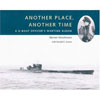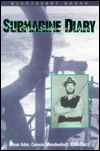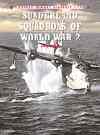Another Place, Another Time
A U-Boat Officer's Wartime Album
Hirschmann, Werner
2011, Robin Brass Studio/Chatham/US Naval Institute
ISBN 1896941648
Paperback, 255 pages, 200 illustrations of all types
| Rating. |  |

This book is a personal account of what the war and life in the Third Reich was like for, Werner Hirschmann, a U-boat engineering officer.
Hirschmann joined the German Navy as part of Crew 40, and elected to pursue an engineering trade. From there, he worked his way up the ranks, serving on a destroyer and several U-boats, ending up on U-190 at the war's end.
One of the points Hirschmann makes in the first part of his book is that all too often the study of the U-boat war is the study of certain successful commanders. The myriad of people who supported these individuals, not to mention the thousands who served on less distinguished boats, are nameless and nearly invisible to most historians. Hirschmann was a normal person living in extraordinary times, but in relating his wartime experiences, we are able to perceive what things were like for Kriegsmarine officers and gain a better understanding of life in Hitler's Germany.
Hirschmann was born in Dusseldorf and aspired to be a Naval Officer from his youth. (Incidentally, his father served on the battleship Schleswig-Holstein at Jutland). Though he hoped to serve on surface ships, after an initial stint on the destroyer Hans Lody, the needs of the U-boat war took precedent. Hirschmann served a brief period on U-375 in the Mediterranean, and then with U-612 after the boat's return to service in May, 1943, following a collision which sunk it in training. After U-612's recommissioning, it was posted to a training unit for U-boat commanders and, wanting to fight the war, after several bureaucratic false leads, Hirshmann managed to get an assignment to U-190, joining it February 1944. He served as U-190's engineering officer through the end of the war and the boat's surrender to the Royal Canadian Navy in May, 1945.
To military historians, the most interesting part about Hirshmann's naval career is how he brushed with famous ships and personalities of the era. While with the Hans Lody, he helped escorted the Bismarck from Germany to Norwegian waters, before the latter separated for its ill-fated Atlantic mission. The book is loaded with pictures the author took of noted ships of the era he came across, including the afore-mentioned Bismarck, Gneisenau, the light cruiser Nurmberg, the sail training ship Horst Wessel, and the ill-fated Wilhelm Gustloff. In U-boat service, Hirshmann came across with (among others) Schuhart, Frauenheim, von Tiensenhausen, Kals, and Kretschmer. He served on type VIIC and IXC boats on combat missions, as well as type II's while in training, which gives him rare perspective on the three main types of frontline boats Germany used in WWII. As an engineering officer, Hirschmann was well-qualified to say that he thinks too much was made of the different handling characteristics between the type VII's and the type IX's, with the latter's sluggish reputation being unjustly deserved.
However to me the most interesting part is just reading about what life was like for Hirshmann, beginning from his childhood in 1920s Germany to his adolescence in the 1930s, his first forays into manhood in the war-torn Reich, and his time as a POW in Canada and England. When studying the U-boat war, we tend to forget that the sailors involved had families, girlfriends, wives, and children on the home front. Trying to maintain some semblance of normalcy amidst increasing decay in Germany was dauting, yet Hirshmann puts a very human face on all that was happening. As well, we are privy to all the behind the scenes parts of his naval service, including the rigorous academic and qualification training it took to become a U-boat engineering officer. One juicy, recurring theme is the pompous, arrogant nature of certain U-boat commanders including Oblt Hans-Edwin Reith, his commander for two of his three patrols on U-190.
On Hirshmann's last patrol on U-190, the boat sunk the Canadian minesweeper Esquimalt outside of Halifax harbour. Three weeks later, as U-190 was making its way back home, Germany surrendered. U-190 was brought to Bay Bulls, Newfoundland before the crew was disembarked and sent to POW camps in Canada. Hirschmann spent two more years in captivity before returning to Germany, but enjoyed his time in Canada sufficiently that he immigrated there in the 1950s and embarked upon a successful career. He likely would have remained invisible to history save for the efforts of Donald Graves, a Canadian historian, who convinced him to record his memories. Future generations will be grateful.
Unfortunately, this book will never be as celebrated as Iron Coffins - but that is almost the brilliance of it. Hirschman takes a decidedly low-key theme in relating his wartime adventures, and that makes it easy to connect with what he is saying. He is not over-the-top in describing U-boat warfare, in fact he stresses the weeks and weeks of monotony, which more than offset the combat the boat saw. The book flows extremely well, and is richly illustrated with photos from the author's personal collection that do a wonderful job of bringing to life his time as a U-boat engineer.
The book also has a 40 page pictoral tour of the type IXC/40 U-boat, drawing on many unpublished photos of U-190 and U-889 that were discovered in Canadian archives.
Highly, highly recommended.
Review written by Jeremy Keyes.
Published on 8 Oct 2009.
This title is highly recommended.
Purchase information: (info) Get Another Place, Another Time now at amazon.co.uk (£ 20.69)
Get Another Place, Another Time now at amazon.co.uk (£ 20.69)
Return to our main review page.



